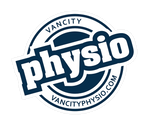In the world of rehabilitation, we often use the phrase “motion is lotion” meaning, frequent movement helps to combat barriers to engaging in activities that we enjoy.
Have you ever dreaded walking your dog because you know the activity will cause a flare, or felt unable to go for a walk with a friend or family member because that day was a bad pain day?
If you have, that’s totally normal and it is important to acknowledge your current position on this journey as your starting point. The information to come will help you get started on the path to moving with ease, unencumbered by limitations of your pain experience.
Movement is an integral component of a healthy lifestyle in general and it is even more important when dealing with persistent pain. Moving too little on one hand, does not give a potent benefit, and moving too much on the other hand, may leave you tired and sore later.
To facilitate sustainable gains in movement capacity, I suggest that you move to the edge of pain. This means that you should move until you feel yourself leaving that place of comfort and try to re-approach movements which aggravate your pain, breaking up the amount of time you spend doing those activities (pacing) or changing your posture while doing those activities.
Mild discomfort with movement is okay but I encourage you to move within your limits.
Moving at the edge of pain is challenging and takes practice. To help guide you, whenever doing any movement, be it the movements to come or daily activities, ask yourself three questions:
-
Am I safe?
-
Will I aggravate this issue further?
- Am I holding body tension?
Let these questions put you in the pilot seat. Try your best to monitor the pain you experience when moving – allowing yourself to explore a slight increased discomfort in the form of a stretch sensation or a muscular fatigue sensation while trying to stop before the point of feeling sharpness or radiating pain throughout your leg or back.
Answering these three questions will help you feel safer while moving, helping you move more confidently. The movements below are a great start to moving in a way that will combat the tightness and discomfort brought on by sciatica.
encourage you to give these a try and see how they make you feel. It may take some time before you notice any changes so try to take note of how these movements feel on day one and reflect again in a week.
Not all exercises may be right for you or your condition. You will need to see your physiotherapist for more tailored and appropriate exercises for your stage and type of problem.
Breaking up sitting time
Aside from doing the movements laid out above, there is a growing body of evidence that suggests spending too much time sitting may be a contributor to persistent sciatica.
A great way to break up sitting time is to set a timer for 60 minutes whenever you sit down in a chair. When the timer goes off, either walk around for 5 minutes, stretch, or do some other forms of gentle movement. Repeat this process throughout your day, everyday.
Pace Management
While doing chores, take a break whenever you notice an increase in the intensity of your pain combined with an inability to release muscle tension, inability to calm or smooth out your breath, or when it no longer feels like you will be okay later.
Taking five minutes or so to practice calm breathing or release muscle tension may be the remedy your body needs to continue to work without paying for it later. This may delay the completion of your chores but over time you can work to do more without taking as many breaks, building endurance at a steady pace.
Sciatica can be very debilitating and cumbersome. If you are currently struggling, try to implement some of the strategies delineated in this series.
Staying committed to a program may be challenging but if you set goals and make the strategies discussed in this series part of your daily routine you may notice profound changes to your mind, body, and spirit.
Is sciatica the same as low back pain?
Sciatica commonly presents as low back pain that travels down one leg, with or without nerve type pain and associated weakness. It is caused by injury or compression to the sciatic nerve. The sciatic nerve is the largest and longest nerve in the body, and its roots run from L4 to S3, starting in the lower back, running down the back of each thigh, splitting behind the knee, traveling into the underside of each foot. It supplies the muscles and skin of where it passes.
To understand sciatic type pain, first we need to understand what nerve pain is and its classic signs and symptoms. Nerve type pain can be described as “paresthesia”, which can be the feeling of burning or prickling, numbness, tingling and/or sometimes itching. It is often quite an uncomfortable sensation! Some individuals with sciatic type pain experience this paresthesia in their leg that’s affected. Depending on which level the sciatic nerve is compressed or irritated, this will determine where the person may feel the pain, tingling and/ or numbness. This could be in the back of their thigh, in their foot, and/ or toes. The person may also feel weakness in their limb, which may be described as feeling their leg is tired or heavy.
But why does this type of pain happen with sciatica?
There are 2 causes of sciatic type pain: spinal and non-spinal. Spinal causes are related to your spine – go figure! Spinal causes can be from poor body mechanics or posture, trauma, and/or strong twisting movements.
The most common spinal cause is a disc herniation or bulge. Discs are like jelly donuts in between each of your vertebrae (bones that make up your spine) and if they are compressed, they can irritate the nerve at that level. Non-spinal causes occur outside the spinal region, and cause compression or irritation of the sciatic nerve itself, along its pathway. Regardless the cause – the good news is sciatic pain often resolves over time. Physiotherapy can help to diagnose and treat sciatica, with the appropriate education, manual therapy, exercise prescription, and self-management techniques.
Book a consultation today: https://vancityphysio.janeapp.com/
Follow us on Instagram for more information: VanCity Physio @vancityphysiotherapy


